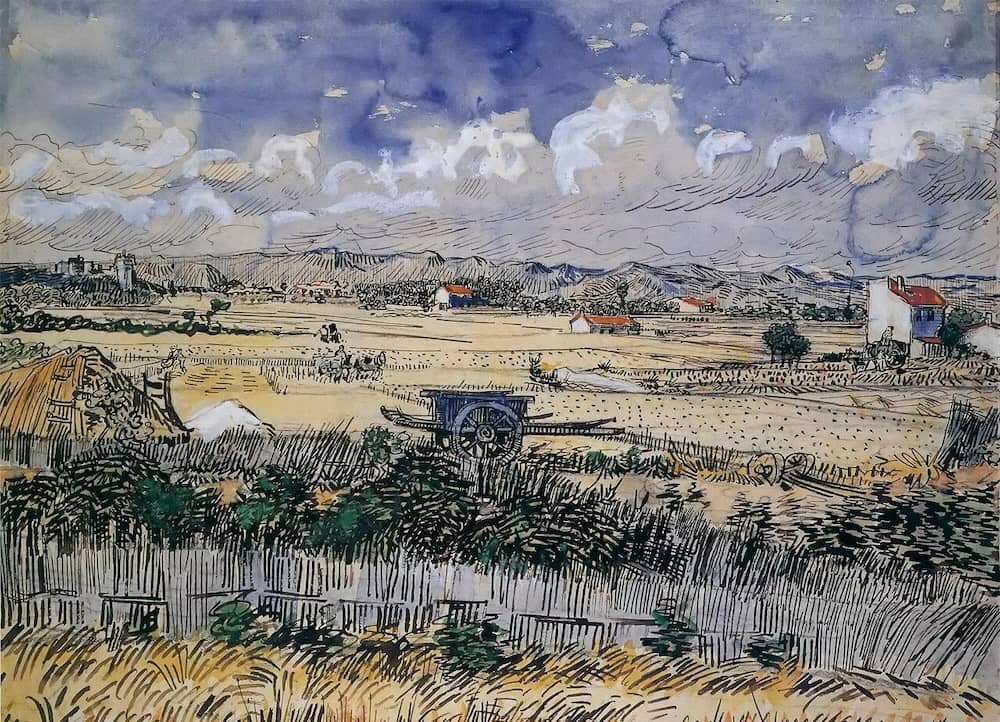The Harvest, 1888 by Vincent van Gogh

The last few decades of the nineteenth century saw immense changes in almost all aspects of life, including the arts and music. Van Gogh's short career came as the Impressionists were disbanding, and even more avant-garde artists were emerging. Though it was one of Van Gogh's initial wishes to 'belong' to a group of artists, his work bridged a number of different movements, so that in just 10 years he managed to incorporate elements of the Impressionists, Post-Impressionists, Symbolists, Expressionists and Fauves within his art. It was this period that gave birth to modern art, and made the transition from traditional to new. Despite the innovations there was still an overriding lack of acceptance for these artists who were paving the way for the new century of art.
Van Gogh began the The Harvest painting with a few watercolour drawings.

In a letter to his brother Theo, he expressed his intentions for these drawings:
Now the Harvest, the Garden, the Sower, and the two marines are sketches after painted studies. I think that all these ideas are good, but the painted studies lack clearness of touch. That is another reason why I felt it necessary to draw them."
The Harvest was one of many paintings that Van Gogh made of the countryside surrounding Arles, and reflects his experiments with flat areas of colour and bold outlines. He differentiated his brushstrokes, seen here in the spiky cut cornfield contrasted against the flat area of standing corn, and was applying his paint in great thick strokes that lend the picture plane a textural quality.




















